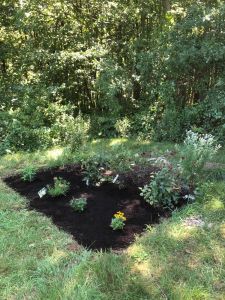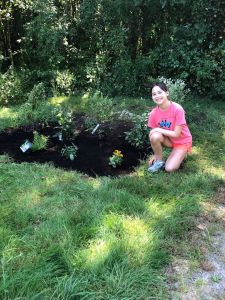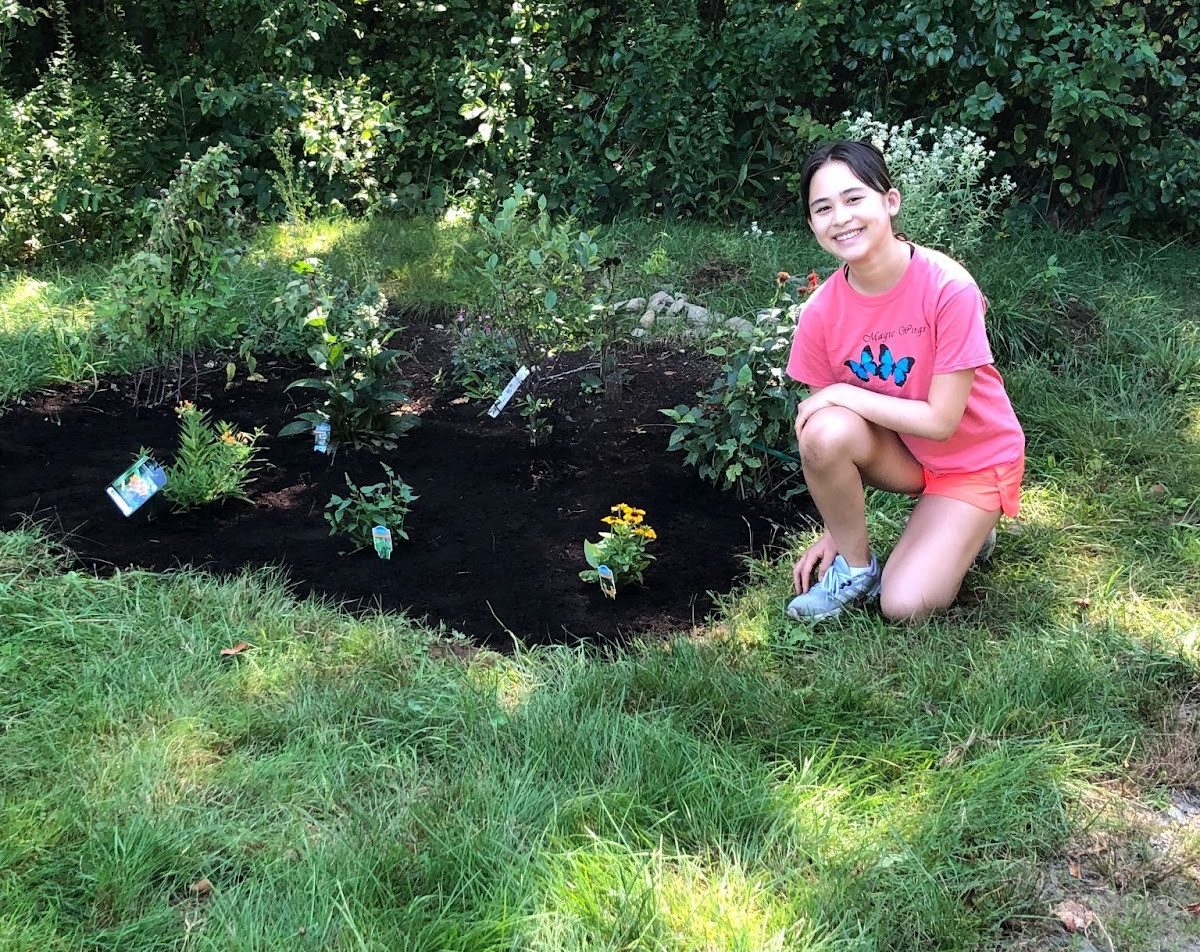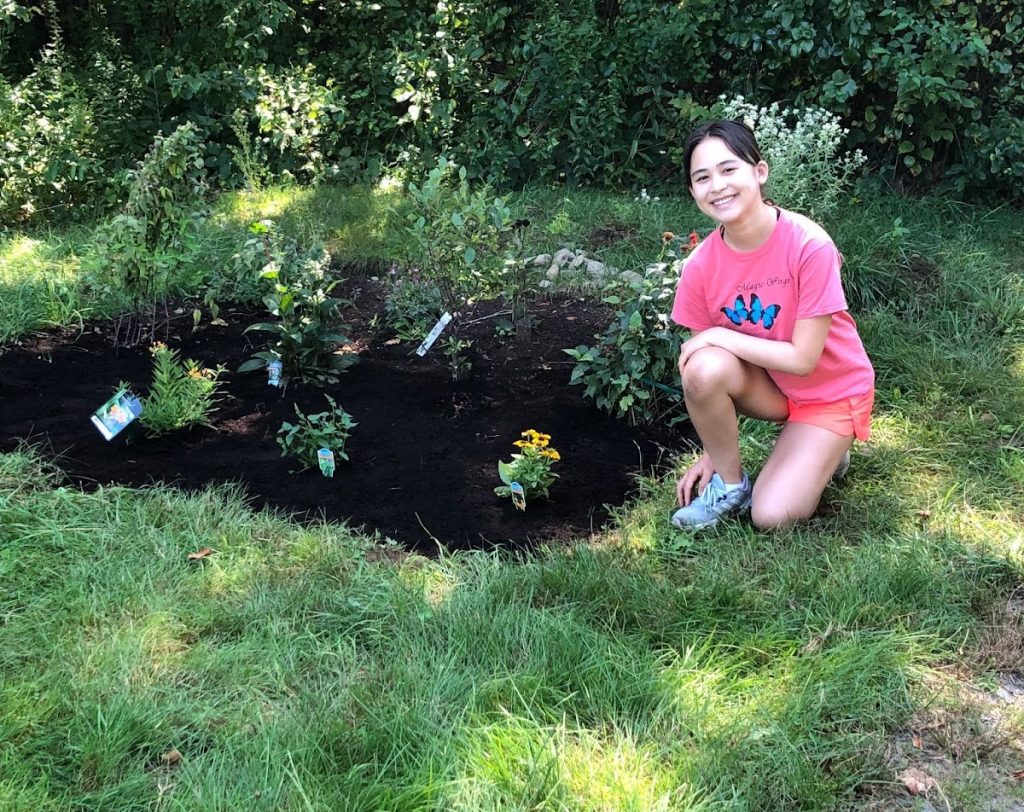My CSGC summer grant project was creating a pollinator composed of native plants that would promote the survival of native pollinator species. While the European honeybee species is far from endangerment, other North American pollinators are declining in population. The problem is that there are native pollinator species that are the sole pollinators of a plant. If the pollinator population decreases, the plant species that rely on them to reproduce will also decline. The purpose of this project is to both support native species populations and teach younger children about native pollinators.
In the garden, I planted 12 different flowering plants native to Easton, Connecticut, where I created the pollinator garden. These flowers include two varieties of bee balm, fern-leafed bleeding heart, hairy mountain mint, two types of coneflower, catmint, chokeberry, foxglove, swamp milkweed, butterfly weed, and anise. Immediately after planting the flowers, I recognized a species of native bumblebee, Bombus impatiens. Though the Common Eastern Bumble Bee population is not at risk, it could be without proper conservation.
While carrying out my project, I ran into barriers to my goals, but I learned how to find an alternative route or overcome those barriers. First, I needed approval to start the garden on land next to the Easton Back Yard Beekeepers Association bee yard. Since I was developing the garden on state-owned land, I contacted a ranger who helped unlock the gate to the bee yard. An obstacle was our schedules- sometimes I was available, but the ranger was not, preventing work in the garden. I persisted in finding times that would work for both of us.
At the July monthly Wannabees (junior beekeeping) meeting, I spoke to elementary and middle school children about acknowledging the need for preserving native bee species alongside raising European honeybees.
I thank the CSGC for making this project possible. The Workman Grant provided me with the resources to promote native wildlife preservation in Connecticut. I am grateful to Paula Wolf of the Back Yard Beekeepers Association and Jim Smith for unlocking the gate, and allowing me to carry out the project.
-Jade ’25



